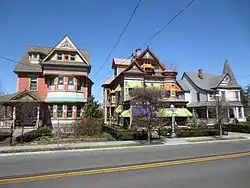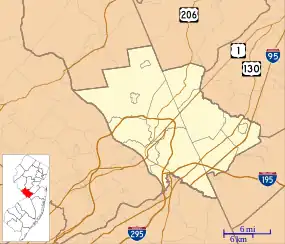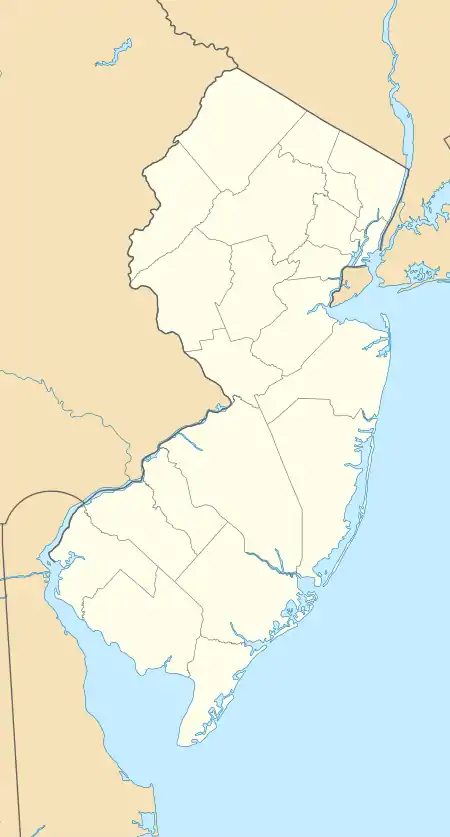Stockton Street Historic District | |
 | |
   | |
| Location | 126-326 Stockton Street, 219-237 Rogers Avenue, Hightstown, New Jersey |
|---|---|
| Coordinates | 40°16′14.8″N 74°31′40.6″W / 40.270778°N 74.527944°W |
| Area | 14.35 acres (5.81 ha) |
| Built | 1830-1915 |
| Architect | Multiple |
| Architectural style | Queen Anne, Gothic, Italianate, Federal, Colonial |
| NRHP reference No. | 05001331 |
| NJRHP No. | 4447[1] |
| Significant dates | |
| Added to NRHP | November 25, 2005 |
| Designated NJRHP | May 13, 2005 |
The Stockton Street Historic District covers both sides of Stockton Street (County Route 571), from Railroad Avenue to Summit Street, and a portion of Rogers Avenue in Hightstown, New Jersey. It is notable for its Victorian homes, First Methodist Church, and the Hightstown Civil War monument. It is also significant for its association with the introduction of rail service to New Jersey, as the first railroad in the United States to connect two major cities, New York and Philadelphia, originally ran along what is now Railroad Avenue at the eastern end of the district. In 1832, the John Bull, the first locomotive in the country, provided the first steam-powered passenger rail service in the country, stopping at Stockton Street.[2] In July 2015, Hightstown became a Preserve America community which enhances historic preservation, including the district.[3]
See also
References
- ↑ "New Jersey and National Registers of Historic Places — Mercer County" (PDF). New Jersey Department of Environmental Protection — Historic Preservation Office. January 22, 2015. Archived from the original (PDF) on May 16, 2013.
- ↑ Kalmis, Kenneth (June 1, 2004). "Stockton Street Historic District". National Register of Historic Places. National Park Service.
- ↑ "Which N.J. town did Michelle Obama name a 'Preserve America' community?". NJ.com. July 2015. Retrieved October 21, 2017.
External links